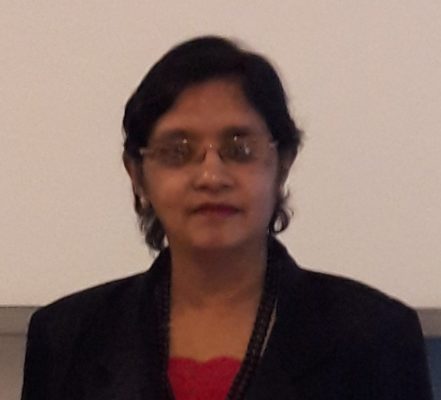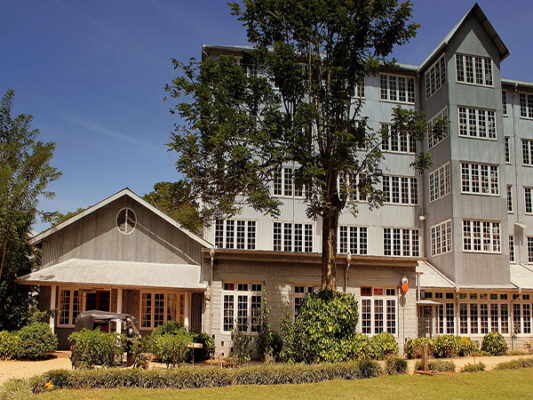Ceylon Tea Museum – vintage Hanthana Tea Factory
By Arundathie Abeysinghe
 Kandy is a mandatory stop in tourist itinerary. Breathtaking vistas, salubrious climate, culture, arts, handicrafts, Kandyan hospitality and scenic attractions have all contributed to Kandy as a famous tourist destination.
Kandy is a mandatory stop in tourist itinerary. Breathtaking vistas, salubrious climate, culture, arts, handicrafts, Kandyan hospitality and scenic attractions have all contributed to Kandy as a famous tourist destination.
Dotted with verdant tea estates in the surrounding hills, *Hanthana, *Nilambe, *Hewaheta, *Pussellawa and *Gampola as well as situated at an altitude of 650 meters – 1300 meters of tea cultivation, Kandy is known as a ‘mid-grown’ tea region.
In 1867, Tea cultivation started in Sri Lanka in Kandy in *Loolcondera Estate. The weather in Kandy providing a conducive environment for ‘Kandy Tea’, a bright infusion with a coppery strong tone as tea estates in Kandy are clustered in valleys where the wind is less fierce and sheltered from monsoon winds.
A few years ago, the first Tea Museum in the world was set up in Hanthana a few kilometers uphill from Kandy City by some ex-planters of tea estates with the objective of imparting their knowledge about the industry to the general public.
In 1977, after leasing out the abandoned Hanthana Tea Factory from Janatha Estates Development Board (JEDB), discarded machinery from tea estates in Kandy and Matale were brought to former Hanthana Tea Factory and were repaired and refurbished for display.
Ceylon Tea Museum is established in the 1925 vintage Hanthana Tea Factory which was abandoned for many years while preserving the atmosphere of a tea factory, at a cost of Rs. 32 million. After the refurbishment, the Museum has a good collection of memorabilia including equipments used by tea pioneers *James Taylor and *Sir Thomas Lipton as well as vintage tea-processing paraphernalia. The Tea Museum project was carried out by Sri Lanka Tea Board, Tea Research Institute and Planters’ Association of Ceylon.
The old machinery had been collected from many tea estates nearby; Hare Park Estate Hunnasgiriya, Galekella Estate Hunnasgiriya, Girindiela Estate Rangalla, Nalanda Estate Madawala in Ulpotha, Ambalama Estate Galaha, Knuckles Estate Tahalawantanne and Haggala Estate Madulkelle.
Primary objectives of the Museum are to exhibit machinery used in the tea industry in the past, memorabilia, documents, books, pictures and objects of historical value of the tea industry, to promote tea as a global beverage thereby enhancing tea exports, to exploit the tourism potential of the tea industry and thus strengthen Sri Lanka’s image as the world’s leading tea producer, to publish and distribute materials for the enrichment of the tea industry and also to educate Sri Lankan youth on the history of the tea industry and its contribution to the economy.

The Museum consists of four floors. The ground floor and the second floor exhibit disused machinery, some dating more than a century and were used to operate a pulley-powered factory. The first floor consists of a library and an auditorium with facilities for audiovisual presentations. The third floor is allocated for tea sales outlets of country’s leading manufacturers of ‘Ceylon Tea’. The fourth floor is a tea café. There is a telescope in this floor. Panoramic views of Kandy City, Hunngasgiriya and Knuckles Mountain Ranges as well as Matale range of hills can be viewed through the telescope.
The exhibits at the Museum include items such as ‘Little giant’ tea roller (1889), hand operated tea roller (1895), the ‘Venetian drier’ (because it operates on the same principle as the Venetian blinds). This is the first tea dryer made by W&J Jackson, a ‘hot bulb engine’, about 100 years old, the oldest known packet of Ceylon Tea (more than 60 years old), a photo of the largest tea bush in the world depicting 28 pluckers surrounding the bush, a handwritten Visiting Agent’s report (dated 25 June 1895) and also an archive with items belonging to James Taylor.
The road to the Tea Museum is a winding uphill road in good condition with easy access which circles the Museum. There are adequate parking facilities for cars as well as tourist coaches. The grounds surrounding the Tea Museum are landscaped with diverse array of tea bushes, some of them endemic to Kandy region.
The first successful experiments of tea cultivation were made in Kandy during the British Colonial Era after the coffee blight. Tea cultivation spread to the entire hill country from Kandy.
The Museum is located in close proximity to Loolcondera Estate (where tea was first commercially grown in Sri Lanka). Hence, connoisseurs of tea are of the view that establishing Ceylon Tea Museum in Hanthana in Kandy is the perfect location for the Museum.
Opening Times
Tuesday to Saturday: 08.30 a.m. – 15.45 p.m.
Sunday : 08.30 a.m. – 15.00 p.m.
(Closed on Mondays & *Poya Days)
Directions: From Kandy to Ceylon Tea Museum – 4.4 kilometers via Hanthana Road
Travel time: 20- 30 minutes
- James Taylor – A Scottish tea planter (March 29, 1835 – May 2, 1892) who introduced tea to Ceylon (Sri Lanka was earlier known as Ceylon). James Taylor arrived in Ceylon in 1852 and settled in Loolcondera Estate in Delthota (about 25 kilometers via Galaha – Peradeniya Road). He lived in Ceylon until he passed away in 1892.
- Sir Thomas Lipton – Connoisseur of Ceylon Tea Trade,Scottish Tea Baron Sir Thomas Johnstone Lipton popularly known as Sir Thomas Lipton was an enterprising Scot who left an indelible impression on entire Sri Lanka with his genius.
- Gampola – A town in Kandy District, Gampola was the capital of Sri Lanka during the reign of King Buwanekabahu I in the mid 14th
- Hanthana- Situated at a distance of around 5 kilometers from Kandy City, adjacent to University of Peradeniya, the mountain range offers breathtaking views of Kandy City and Knuckles Mountain Range. Hanthana Mountain Range has served as a location for movies and music videos.
- Hewaheta – Situated at a distance of 44 kilometers from Kandy City, Hewaheta is a village in Kandy District.
- Loolcondera Estate – Situated about 32 kilometers from Kandy City, Loolcondera Estate also known as Loolkandura Estate is the first tea estate in Sri Lanka.
- Nilambe – Situated around 24 kilometers from Kandy City, Nilambe can be reached via Peradeniya- Galaha – Delthota Road.
- Pussellawa – Situated at an elevation of 855 meters above sea level, Pussellawa is a small town in the tea region of the Central hills.
- Poya Day – Poya is the name given to the Buddhist Full Moon Holiday known as “Uposatha” (Buddhist day of religious observance which was in existence from the Buddha’s period to date). There are 13 -14 Poya Days including Adhi (extra in Sinhala) Poya Day per annum. Adhi Poya Day is the second Poya Day of a month as in Adhi In Sri Lanka Poya Day is declared as a Public, Bank and Mercantile Holiday.







